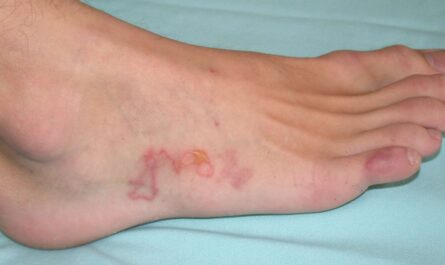Smoking Cessation: Saying No to Nicotine Addiction
Smoking is a habit that is not only hard to quit but is also detrimental to one’s health. Nicotine is hugely addictive and breaking free from its grip requires tremendous willpower and effort. Over the years, several smoking cessation products and therapies have been developed to help smokers kick the butt and lead a healthy nicotine-free life. This article explores some of the commonly used nicotine de-addiction products and therapies that can aid in the fight against tobacco addiction.
Nicotine Replacement Therapies
Nicotine replacement therapies (NRTs) help reduce withdrawal symptoms experienced during smoking cessation by providing controlled doses of nicotine without the other harmful chemicals present in cigarette smoke. Some commonly used NRT products include:
Nicotine Gums and Lozenges: Nicotine gums and lozenges allow nicotine absorption through the lining of the mouth. They release small doses of nicotine when chewed or sucked, providing relief from cravings. However, they need to be used correctly as per dosage guidelines for best results.
Nicotine Patches: Transdermal nicotine patches are applied on the skin and provide continuous low doses of nicotine through skin absorption over 16-24 hours. They are very convenient to use but may cause skin irritation in some users.
Nicotine Inhalers and Nasal Sprays: The nicotine inhaler mimics the hand-to-mouth ritual of smoking. Nicotine from the inhaler is absorbed in the oral cavity. Nasal sprays deliver nicotine quickly through absorption in the nasal mucosa to help combat cravings.
Prescription Medications
Some prescription medications are also effective in helping people quit Smoking Cessation and Nicotine De-addiction. These include:
Bupropion (Zyban): Bupropion is an antidepressant that acts on the brain to reduce cravings and withdrawal symptoms during smoking cessation. It is available as sustained-release tablets.
Varenicline (Chantix): Varenicline is a nicotine receptor partial agonist that curbs nicotine cravings and prevents smoking satisfaction if a person relapses. It is available as tablets to be taken daily as a 12-week course.
Combination Therapies
Using a combination of NRT products or combining them with prescription medications such as bupropion or varenicline results in higher quit rates than monotherapy alone. Some commonly used combinations include:
– Nicotine patch + nicotine gum/lozenge: The patch provides continuous nicotine levels while the gum/lozenge help suppress cravings.
– Nicotine patch + Bupropion: Bupropion relieves cravings and withdrawal symptoms while the patch delivers controlled nicotine doses.
– Nicotine inhaler/nasal spray + Bupropion: Acts quickly on cravings along with bupropion’s effects.
Combination therapies maximize nicotine intake through different mechanisms to effectively fight cravings and make quitting smoking easier.
Behavioral Support Therapies
Behavioral support through counseling and group programs complements nicotine de-addiction therapies and boosts long-term quit rates. Some popular options include:
– Individual Counseling: A counselor helps identify triggers, teaches coping skills and provides encouragement and feedback during the quit journey.
– Telephone Quitlines: Toll-free quitlines provide telephone counseling to help people create a customized quit plan and receive follow-ups.
– Group Support Programs: In-person groups help replace the social element of smoking. Members share experiences and tips to stay motivated on the road to becoming smoke-free.
– Mobile Apps: Several apps take a behavioral approach, providing daily missions, tracking tools and community support to quit smoking successfully.
Making Multiple Attempts
Quitting smoking is challenging and most people may have to try multiple times before being able to quit permanently. Research shows that even after numerous previous attempts to quit, the overall chances of long-term success continue to increase with each additional attempt. It is, therefore, important not to get discouraged by relapse and keep trying with renewed commitment and strategies each time. With the right combination of medications, therapies and strong motivation, kicking the smoking habit is certainly possible.
Taking the major step to quit smoking unleashes multiple health benefits. Within 20 minutes of the last cigarette, heart rate and blood pressure drop. After 12 hours, carbon monoxide level in the blood reduces to normal. Within a few weeks to months, circulation improves and lung function increases. In the long run, quitting significantly cuts the risk of cancer, heart disease, stroke and lung diseases. Gaining nicotine-free independence is totally worth all the efforts. With adequate support and the right approach, quitting smoking for good is well within reach.
*Note:
1. Source: Coherent Market Insights, Public sources, Desk research
2. We have leveraged AI tools to mine information and compile it



